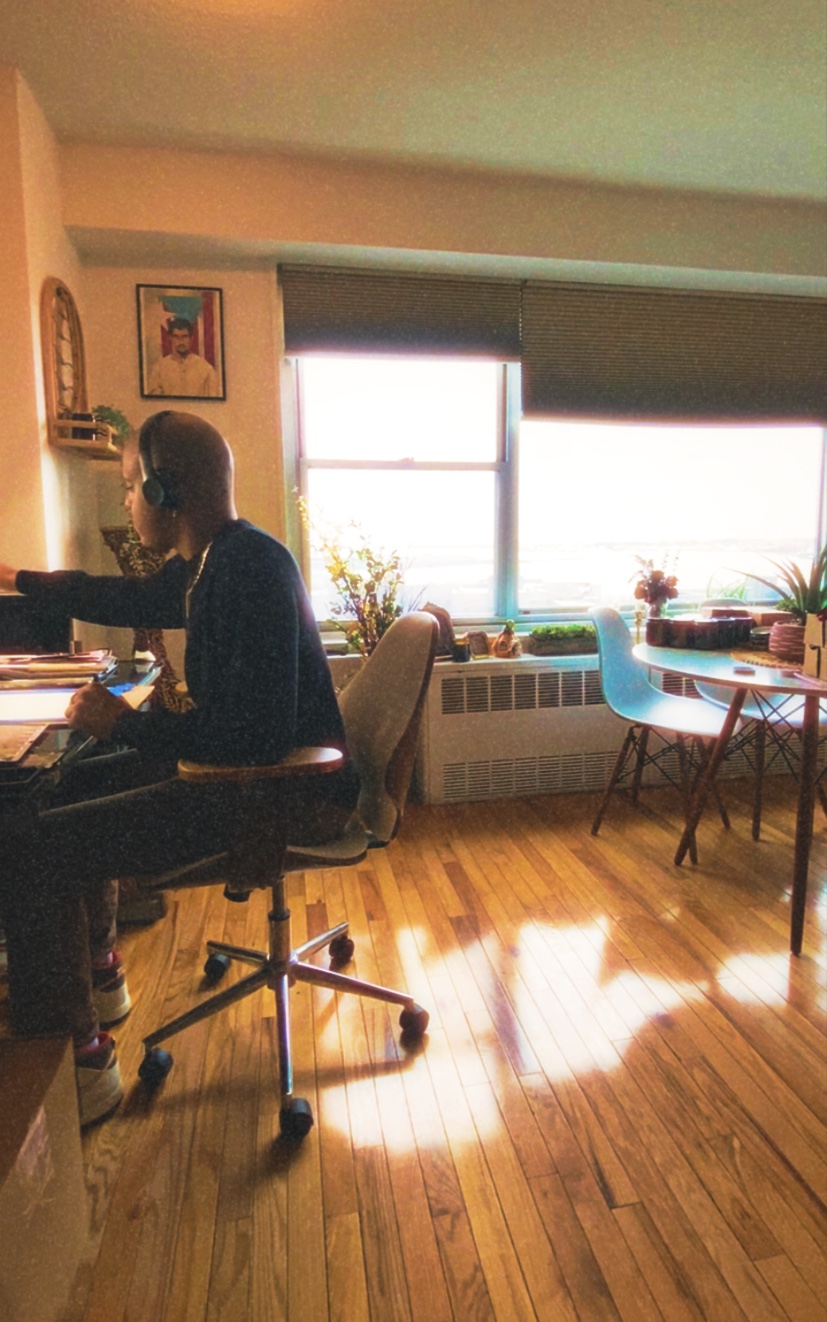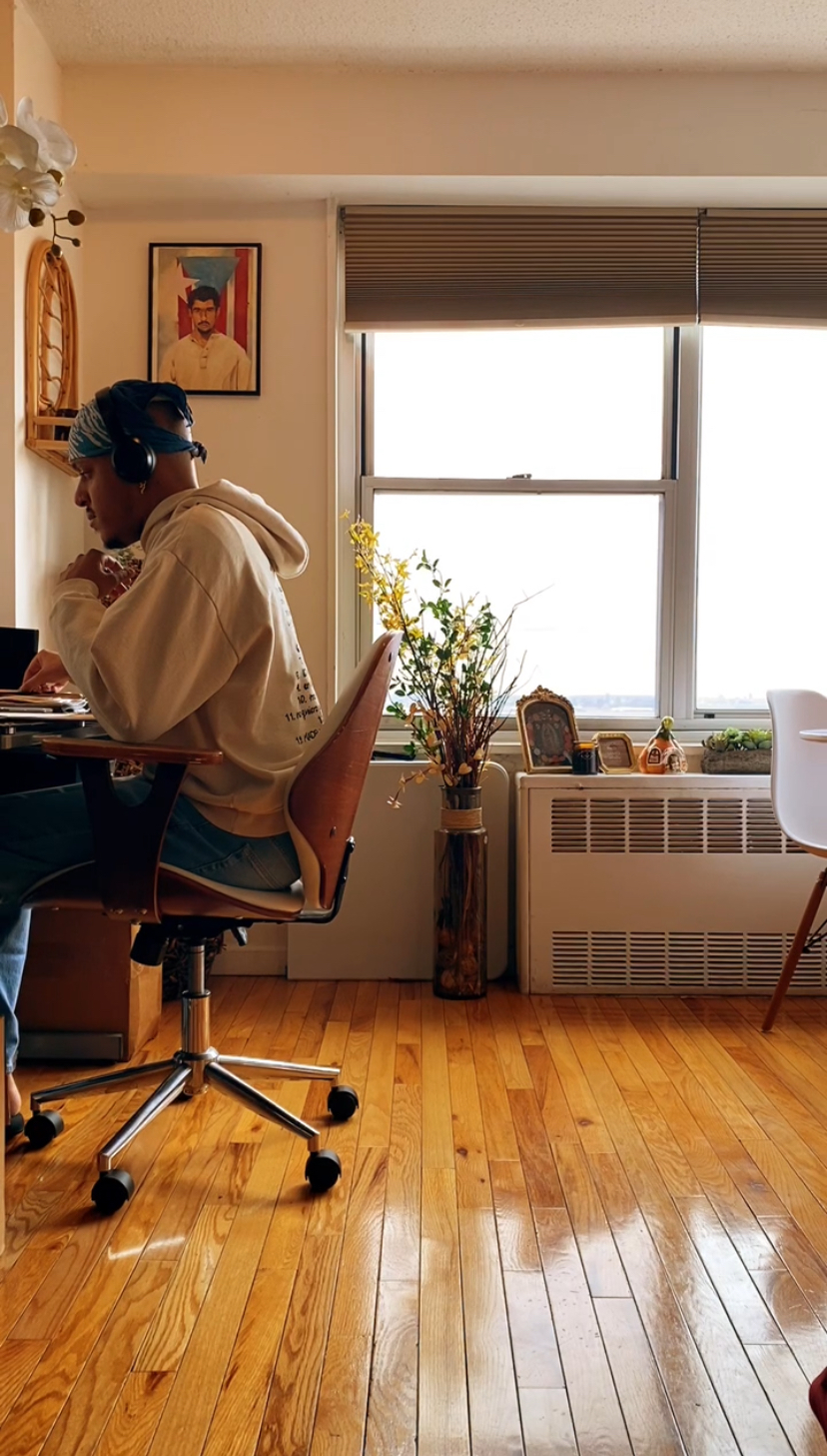We’re excited to introduce you to the always interesting and insightful Jack Ghostel. We hope you’ll enjoy our conversation with Jack below.
Jack, thanks for taking the time to share your stories with us today What’s been the most meaningful project you’ve worked on?
Over the years, I’ve worked on many projects aimed at challenging how we see and value one another. One of the projects I hold closest to my heart is my “Offensive Acceptance” series. The concept revolves around painting the bodies of everyday women, capturing every unique detail that makes them who they are, and celebrating the idea that beauty exists in all shapes and sizes. I’ve always questioned the notion of a universal standard of beauty—who decided that? Why do we allow people in power to dictate what is or isn’t beautiful? It’s damaging, especially to women. Society profits off insecurities by making women feel like they’re not enough, and I hate that.
On a more personal note, the project is meaningful to me because of how deeply it resonates with others. Years ago, a friend told me that one of my paintings changed how she saw herself. For the first time, she could see herself as art—something undeniably beautiful. That moment stayed with me. It reminded me of what art is truly about: evoking emotion and connecting with people. As artists, we often get caught up in the chase for recognition, but for me, knowing my work can leave a lasting impression in someone’s heart is the greatest reward. There’s something incredible about creating art that helps people see their own beauty and feel something powerful.

Jack, before we move on to more of these sorts of questions, can you take some time to bring our readers up to speed on you and what you do?
Well, first, my name is Jack Ghostel, yes that’s my real name. I am a watercolor artist with a simple yet motivating ideology: To create with the sole purpose of showing the beauty in all the things we normally judge. I specialize in evocative, sensual, and surreal traditional illustrations. Merging vibrant colors, ethereal settings, and raw emotion. Art that captures a range of expressions, from serenity and fantasy to uninhibited sensuality. My pieces often showcase strong figures—mostly women—presented with both vulnerability and strength.
I’ve been creating art for as long as I can remember. My older brother was really into comics and anime, and I was captivated by the art styles. As a bit of a loner growing up, I spent most of my time drawing and practicing. My family and teachers always encouraged my creativity, though my family wasn’t keen on me pursuing art as a career.
In high school, I discovered graffiti, which had a huge impact on how I approached color—something that still influences my work today. Around the end of high school, digital art started gaining traction as a legitimate career path. With my extensive knowledge of Adobe programs, I decided to pursue it. I went to college for graphic design and worked as a freelance artist for a few years.
However, over time, I started to dislike the medium. Between bad experiences with clients, the work feeling soulless, and the pressures of capitalism draining the joy out of creating, I reached a breaking point. I decided to step away from digital art entirely and return to my traditional roots. That’s when I took a chance on watercolor—a medium I had never tried before—and instantly fell in love with it.
Now, my focus is on creating art that strikes a balance between my own creative joy and something that resonates with others. It’s been a rewarding journey rediscovering why I fell in love with art in the first place.

Any insights you can share with us about how you built up your social media presence?
I’ve been fortunate to build a following that dates back to the blog era of the internet. Early in my career, I was very active on platforms like Tumblr, which helped me connect with an audience who appreciated my work—and many of them have stuck with me over the years. That said, it hasn’t always been easy. The nature of my art isn’t embraced on every platform, and I’ve faced challenges like having my Instagram accounts deleted multiple times. While that can be discouraging, I’ve learned to stay true to my vision. The right audience will find me.
A significant portion of my following actually comes from live shows. There’s something timeless about word-of-mouth; it might feel like a lost art in the digital age, but it remains incredibly effective. While I still run ads and work within the constraints of algorithms, I’ve found that personal, face-to-face connections leave a much stronger impression. When someone truly connects with your art, it becomes more than just an image they scroll past—it resonates on a deeper level. That connection is what I value most.

Is there something you think non-creatives will struggle to understand about your journey as a creative? Maybe you can provide some insight – you never know who might benefit from the enlightenment.
Over the years, many people have seen me struggle with censorship and finding spaces to display my work. Some have even suggested I give up and shift to creating something more ‘internet-friendly.’ They don’t understand why I continue to challenge major social media platforms. But for me, that’s the essence of my art. Changing what I create would feel like admitting that it’s wrong—that the subjects I paint are too taboo to be seen or discussed. That goes against everything I stand for as an artist.
My identity as an artist is deeply tied to the messages I convey. I can’t compromise or dilute my work just because it’s not universally accepted. Especially not when my goals are about challenging norms and sparking conversations. Art has always been a tool to push boundaries, to defy conventions. To create is, in itself, an act of rebellion, and I’m committed to that rebellion. If I were to conform or silence myself, would I even still be an artist?
Contact Info:
- Website: https://jackghostel.com
- Instagram: https://instagram.com/jack.ghostel


Image Credits
OVONO Media
Daniel Shawell


